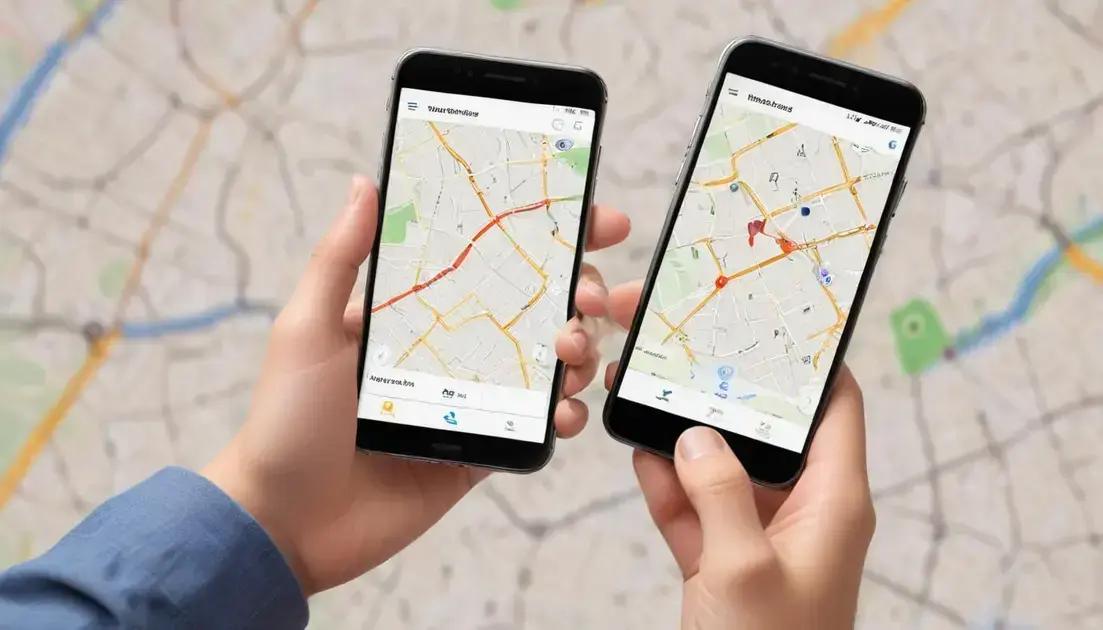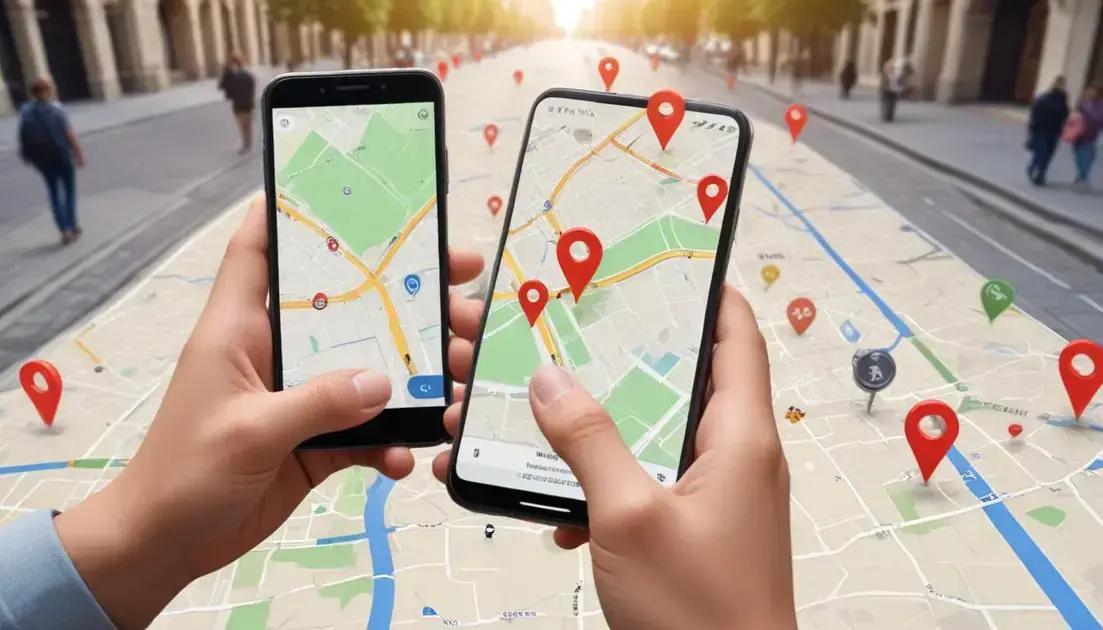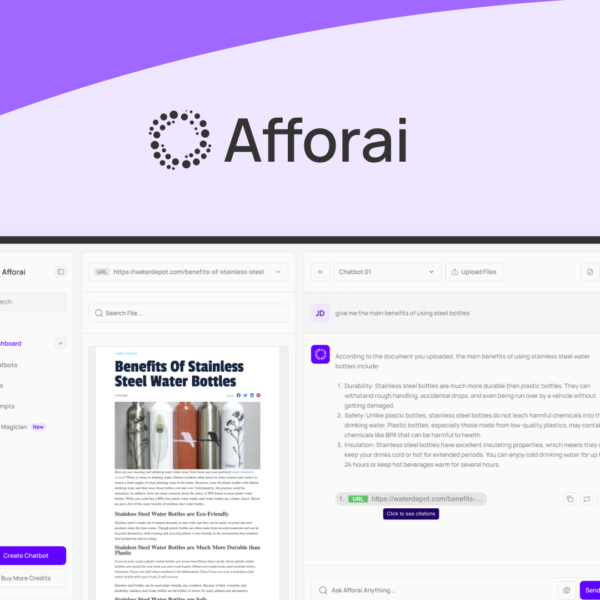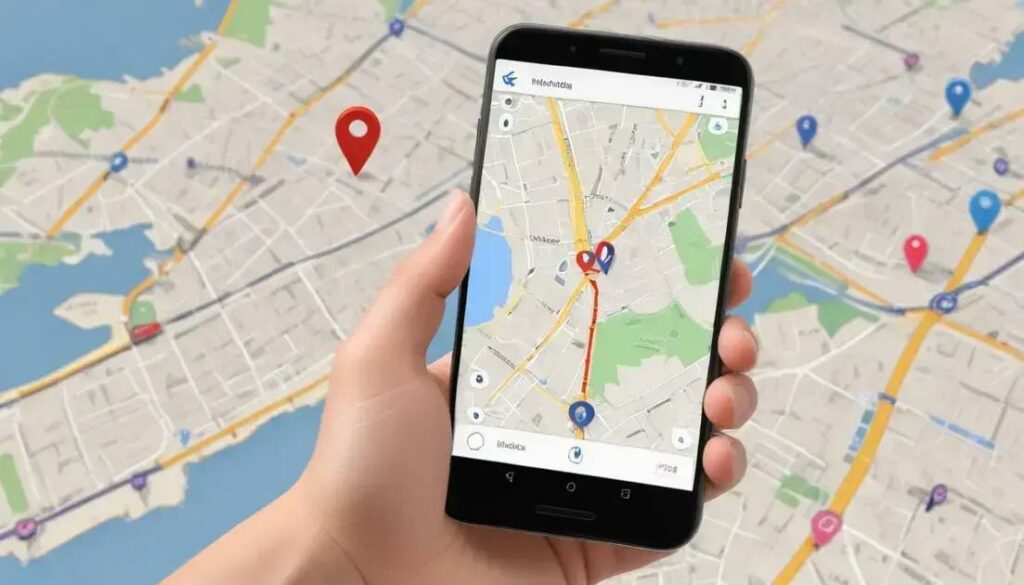Address Lookup serves as a vital link connecting coordinates to physical addresses in location-based apps. It’s essential for ensuring accuracy and reliability, especially when navigating and accessing services in unfamiliar areas.
Understanding Address Lookup in Geolocation
Understanding Address Lookup is important for any website or app that uses location-based features. It helps users find their way around by matching addresses to specific points on a map. This process uses various techniques to convert addresses into geographical coordinates, which can be latitude and longitude.
How Address Lookup Works
When you type an address into a GPS or a map app, it doesn’t just pop up randomly. The app does a fast search in a database of addresses. It finds the right spot and shows it on the map. This helps people know where they are going.
The Importance of Accuracy
Accuracy in Address Lookup is key. If the address is wrong, the map will also be wrong! This can lead to delays and frustration. Users depend on apps to give them the right direction, whether they are driving or walking.
Address Formats
Addresses can be tricky. They come in different formats all around the world. That’s why Address Lookup has to be smart. It should understand different styles and languages. This way, it can find any address, no matter where it is located.
Real-World Examples
Think about online food delivery. When you order food, you want it to arrive at your door. Address Lookup makes this possible. It ensures the restaurant knows exactly where to send your meal. Without it, deliveries would be chaos!
Another example is ride-sharing services. When you get a ride, you just enter your destination. The Address Lookup feature makes sure the driver knows where to go. It gets you to your spot quickly, safely, and with no hassle.
The Future of Address Lookup
As technology advances, Address Lookup will get even better. New tools are being created that can learn and adapt to different data. This means faster searches and even more accurate results. Address Lookup will keep evolving to meet users’ needs.
The Role of Address Search

The Address Search feature is a key part of any map or navigation app. It helps users find specific locations quickly and easily. Instead of scrolling through maps, users can simply type in an address. This saves time and enhances the overall experience.
How Address Search Works
Address Search starts when you enter an address into the search bar. The app checks its database for matching entries. It often shows a list of suggestions as you type. This means you can pick your address even faster.
Benefits of Using Address Search
Using Address Search makes navigation simpler. It’s super useful for finding places like restaurants, stores, or friends’ homes. With just a few taps, you get directions straight to the location.
Common Challenges
One challenge with Address Search is dealing with similar addresses. For example, there might be multiple locations with the same name. This can cause confusion. To help, many apps display additional information, like city or zip code, to clarify.
Improving User Experience
To enhance Address Search, apps often use machine learning. This helps them learn from past searches. As users type, the app can offer the most relevant results based on previous activity.
Real-Life Examples
Address Search is widely used in daily life. Think about ordering food or booking a ride. You enter your address, and the app does the rest. This speedy process makes it easy for everyone to get what they need with just a few clicks.
The Future of Address Search
As technology grows, Address Search will become even smarter. Future updates may include voice search and better location predictions. This means that soon, finding the right address could be easier than ever before.
Key Functions of Geolocation Applications
Geolocation applications have several key functions that help users navigate the world around them. One major function is map navigation. This allows users to get directions from one place to another. Whether driving, walking, or biking, users can find the best route.
Location Tracking
Another important function is location tracking. This feature helps users see where they are in real time. It can be helpful for rideshare apps, delivery services, and even when meeting friends.
Geofencing
Geofencing is another function that creates virtual boundaries. When a user enters or leaves a specified area, the app can send alerts. This is often used for marketing, like sending special offers when a customer is nearby.
Find Nearby Places
Geolocation apps also help users find nearby places. This can include restaurants, shops, or attractions. Users can quickly see what’s around them, making it easier to explore new areas.
Weather Updates
Some applications provide weather updates based on location. This means users can get real-time information about current weather conditions or forecasts. Staying informed helps users plan their day better.
Emergency Services
Finally, geolocation applications can connect users to emergency services. In case of an emergency, they can quickly locate nearby hospitals, police stations, or fire departments. This feature can save lives.
Ensuring Accuracy in Location-Based Services

Ensuring accuracy in location-based services is vital for user satisfaction. When users look for directions or nearby places, they expect the information to be correct. If the data is wrong, it can lead to confusion and frustration.
GPS Technology
The core of location accuracy is GPS technology. GPS stands for Global Positioning System. It helps devices determine their exact location using satellites. A strong GPS signal gives users precise positioning.
Regular Updates
Another way to improve accuracy is through regular updates. Maps and address databases need to be refreshed frequently. This ensures that any new roads, buildings, or changes are reflected in the service.
User Feedback
User feedback plays a big role, too. Many apps allow users to report errors or issues. This information helps developers quickly fix inaccuracies and improve the overall experience.
Data Sources
The sources of data also matter. Combining data from different sources can enhance accuracy. For example, using both satellite data and crowd-sourced information can provide a clearer picture of an area.
Testing and Calibration
Testing and calibration of the application are crucial. Developers should regularly test the services under various conditions. This helps find any issues with accuracy and allows for necessary adjustments.
User Education
Finally, educating users about the technology can help. Understanding how location accuracy works helps them explain any issues they might face. Simple tips on how to get the best results can improve their experience.
Technologies for Developing Geolocation Apps
Building geolocation apps requires a mix of technologies to provide accurate and reliable services. These apps help users find locations, navigate, and connect with nearby services. Here are the main technologies used in developing these apps.
GPS Technology
The first technology is GPS, or Global Positioning System. It uses satellites to provide precise location data. Most smartphones today come with built-in GPS, ensuring users can easily find their way.
Mapping APIs
Mapping APIs are essential for displaying maps on geolocation apps. Google Maps API and Mapbox are popular options. They offer powerful tools for integrating maps, markers, and routes into your application.
Geocoding Services
Geocoding services convert addresses into coordinates and vice versa. This helps users search for places by name. Services like Google Geocoding API can return accurate results, making searches simple.
Real-time Data Processing
Real-time data processing is crucial for updates. It allows the app to refresh location data without delay. Technologies like WebSockets enable live communication, keeping users informed on the go.
Cloud Computing
Cloud computing plays a major role in storing and analyzing data. It allows apps to scale efficiently and handle large data volumes. Services like AWS and Microsoft Azure offer reliable cloud solutions.
Machine Learning
Machine learning can enhance user experience. It helps apps learn from user behavior and provide personalized recommendations. By analyzing patterns, geolocation apps can suggest places based on past activity.
Best Practices for Developers in Address Lookup

For developers working on address lookup features, following best practices is crucial. These practices ensure accuracy and improve user experience. Here are some key guidelines to keep in mind.
1. Validate Inputs
Always validate user inputs. This means checking if the address provided is in the correct format. Simple checks can prevent errors later and ensure smooth searches.
2. Use Reliable APIs
Choose reliable APIs for address lookup. Trusted services like Google Maps API provide accurate geocoding. This is vital for converting addresses into locations.
3. Offer Suggestions
Implement an autocomplete feature. As users type, suggest possible addresses. This makes it easier for them and reduces the chance of mistakes.
4. Monitor Performance
Regularly monitor the performance of your address lookup feature. Keep track of how quickly it responds and identify any issues. Slow responses can frustrate users.
5. Stay Updated
Ensure your data is up-to-date. Address databases change often, so use services that frequently update their information. This helps keep your app accurate.
6. Handle Errors Gracefully
When there’s an error, handle it smoothly. Display clear messages to users if an address can’t be found. This avoids confusion and guides them on what to do next.




